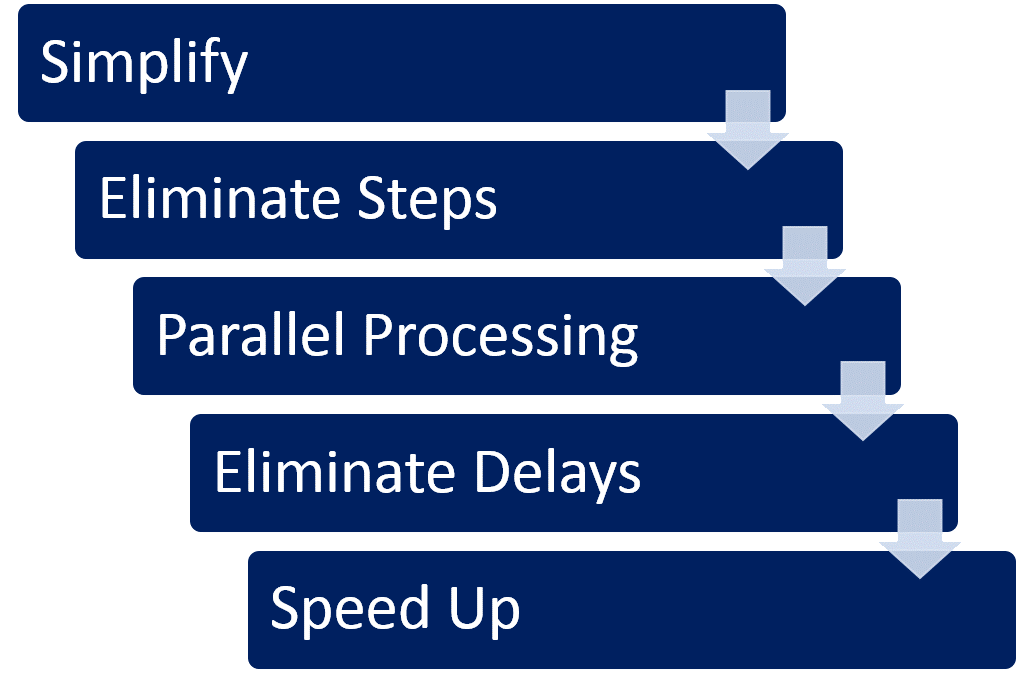 Getting products to market faster is a common objective for every company. While the motivation varies, there are clear benefits including capturing more sales, beating competition to market, providing market flexibility and maintaining a leadership position. Reducing time-to-market can also be a focal point for improving the overall innovation management process (1).
Getting products to market faster is a common objective for every company. While the motivation varies, there are clear benefits including capturing more sales, beating competition to market, providing market flexibility and maintaining a leadership position. Reducing time-to-market can also be a focal point for improving the overall innovation management process (1).
In reducing time-to-market, the focus is generally on speeding up the development process itself. For some senior managers that translates into pushing development teams to work longer hours. While that might provide modest short-term results, it is not an effective long-term solution.
Another issue is knowing which projects you should try to speed up. Not all projects are created equal. Projects with high levels of uncertainty, for instance those with many “unknown unknowns”, are difficult to speed up. You have to understand the project risk profile (2).
Finally, don’t simply jump on the “time-to-market” bandwagon without understanding the ultimate goal: new product success. Getting products to market faster does no good if you are developing the wrong products in the first place (3).
After considering the above, how do reduce project cycle time? Rather than a singular focus on development process speed, a better approach is shown in Figure 1 (4).
Step 1: Simplify
One way to simplify is a strategic choice between an incremental development and a “mega-project”. The natural tendency is to include every feature that anyone has ever requested when defining a new product. Consider developing a basic product first followed by a series of incremental projects to expand functionality and serve adjacent markets. This is the essence of a product platform strategy.
Question: what is the most common problem in product development? Answer: too many projects for the resources. Every manager wants to load the resource pool at maximum “efficiency” with key engineers multitasking across several projects, ultimately slowing every development. An effective resource allocation process prevents system overload.
Step 2: Eliminate Steps
One issue here is process inertia. If you have a documented phased development process, teams end up working for the process, not the other way around. Make sure your development process does not include time-consuming steps that add no value.
Rely on external resources if practical. This might come down to a basic trade-off between money and time. It might be worth paying an outside organization to do a task, speeding time to market.
Smart product architectural decisions can eliminate steps. That might include the use of OEM sub-systems vs. an internal design. That decision might hinge on whether the knowledge embedded in that sub-system is key to customer value. If not, outsourcing might be the right decision.
Step 3: Parallel Processing
For many products, system architecture should be viewed as a strategic decision and not treated as an afterthought. Purposeful decisions will permit many design tasks to be done in parallel saving time.
Your development process should require parallel involvement of all functional groups, manufacturing in particular. Waiting to get manufacturing personnel involved until the product is ready to transition into manufacturing is an all-too-common problem. It slows the project.
Perhaps the most important way to eliminate delays is more effective and timely decision making. This is particularly true at the senior management level. Teams are delayed when senior management is “too busy” to make a decision.
Team structure can eliminate delays by enhancing team communication. There are various choices including autonomous teams, light and heavy-weight team structure and functional teams. The type of project will dictate the best structure.
In manufacturing, process “flow” is important. New product development is no different. There will be bottlenecks that impede “flow” and correcting those bottlenecks, either human resources or equipment, will eliminate delays.
Step 5: Speed Up
After the preceding steps have been addressed, now the focus can be on increasing development speed. Having the right project manager for each project is an imperative. A project manager skilled only in running an incremental development will not know the right levers to pull when tasked with a radical, new-to-the-world project with high levels of uncertainty and/or complexity.
A second method is to front-load resources. Phased development processes emphasize incrementally adding resources as each phase concludes. Increasing resources at the beginning, however, can increase speed. Management often insists on adding resources late in a project. That can actually slow the project more than it helps.
In summary, reducing time to market can be important for capturing more revenue and higher earnings but is no guarantee for market success if you are developing the wrong products. To reduce time to market, focus first on simplifying, followed in turn by eliminating steps, parallel processing, and reducing delays. Then, with sufficient resources, a skilled project manager can pull the right levers to minimize time-to-market.
Want more tips? Register for a free webinar.
Notes:
- An excellent resource on reducing time-to-market: Preston G. Smith and Donald G. Reinertsen, Developing Products in Half the Time (New York, NY: John Wiley & Sons, Inc., 1998)
- See this article: How Project Risk Impacts Project Management in New Product Development (NPD)
- For more information on topics associated with portfolio management and project definition, see these articles: Critical Aspects of Project Portfolio Management in NPD Success, The Role of Product Definition in Innovation Success-Part I and Part II
- Millson et.al. 1992. A Survey of Major Approaches for Accelerating NPD. Journal of Product Innovation Management 9:53-69.
 Bio
Bio
Jeff Groh is President of New Product Visions (newproductvisions.com) located in Flat Rock, NC. New Product Visions helps companies drive revenue and earnings growth by improving their innovation management practices. We focus on processes, organization, management engagement and culture. Services include consulting, Innovation Coach™ Workshops (newproductvisions.com/workshops) and software enablers. Mr. Groh spent 30+ years in industry in a variety of management roles in sales, manufacturing and new product development prior to starting New Product Visions. He is particular passionate about the role of senior management and the culture that supports innovation success. For additional information or a no-cost on-line assessment of your company’s innovation management practices, email Jeff at jgroh@newproductvisions.com or by phone at (302)-367-3160. Available for select speaking engagements.




Be the first to comment on "A Five Step Approach to Reduce Time-to-Market for Manufacturing Firms"